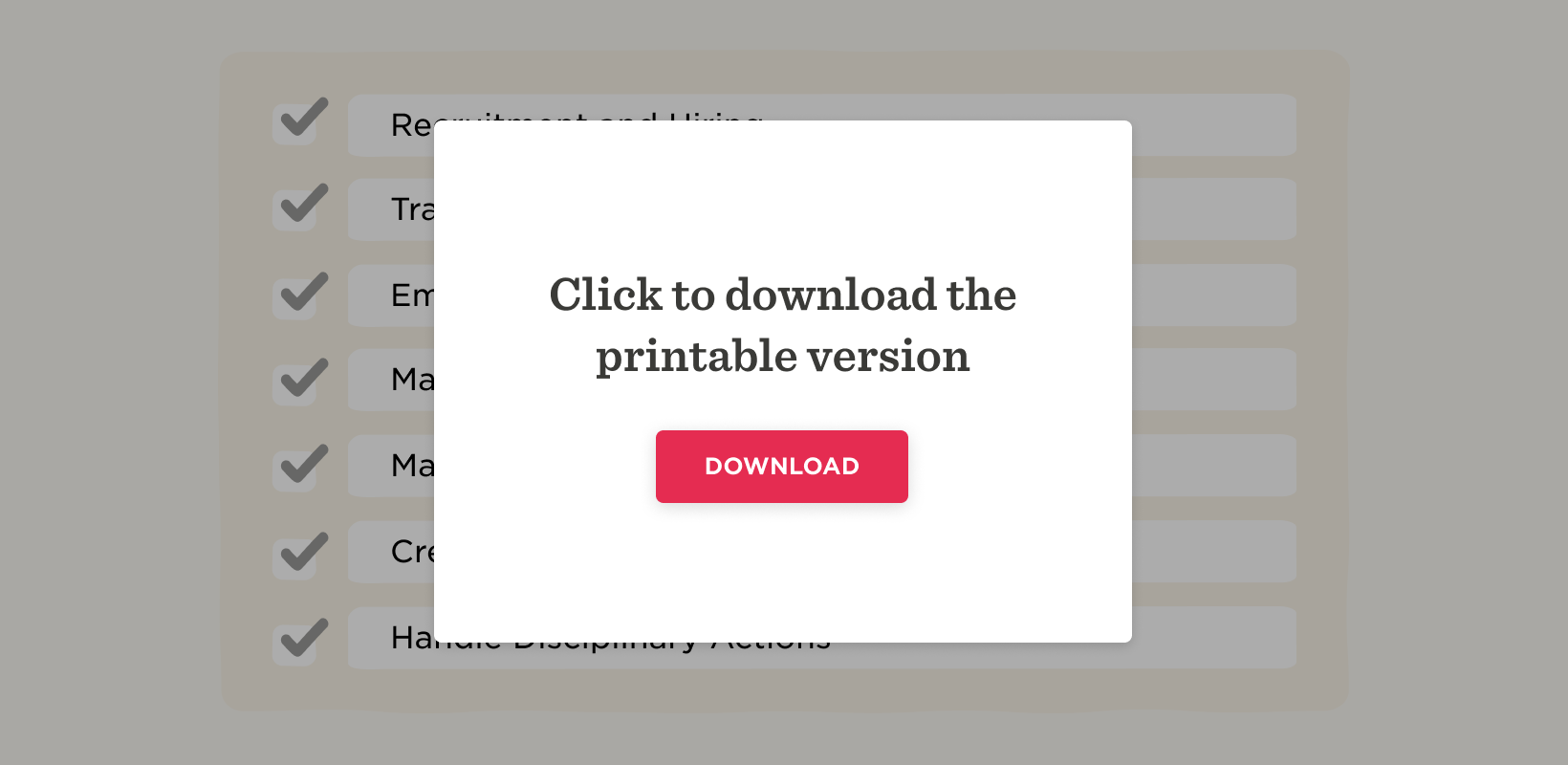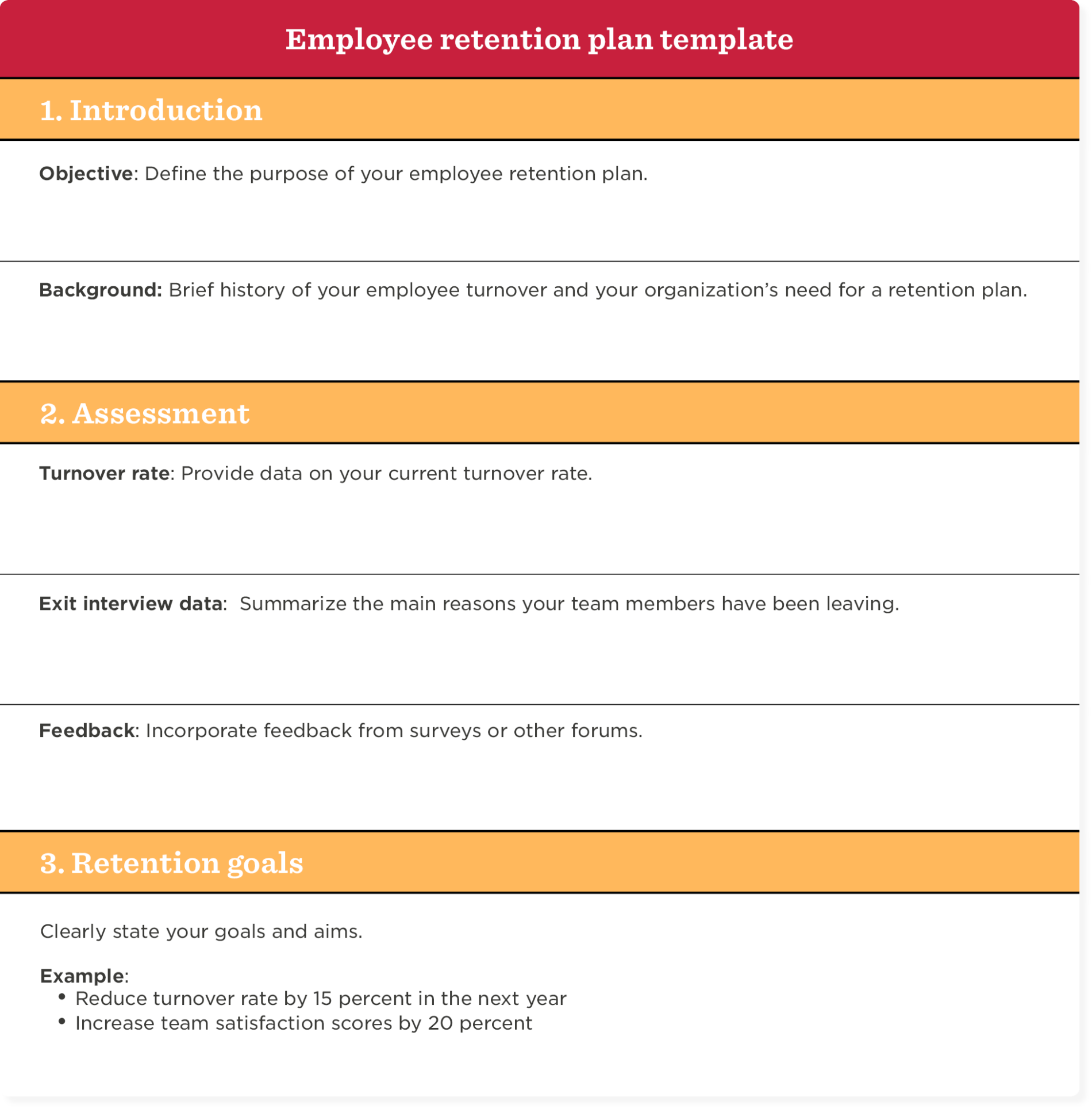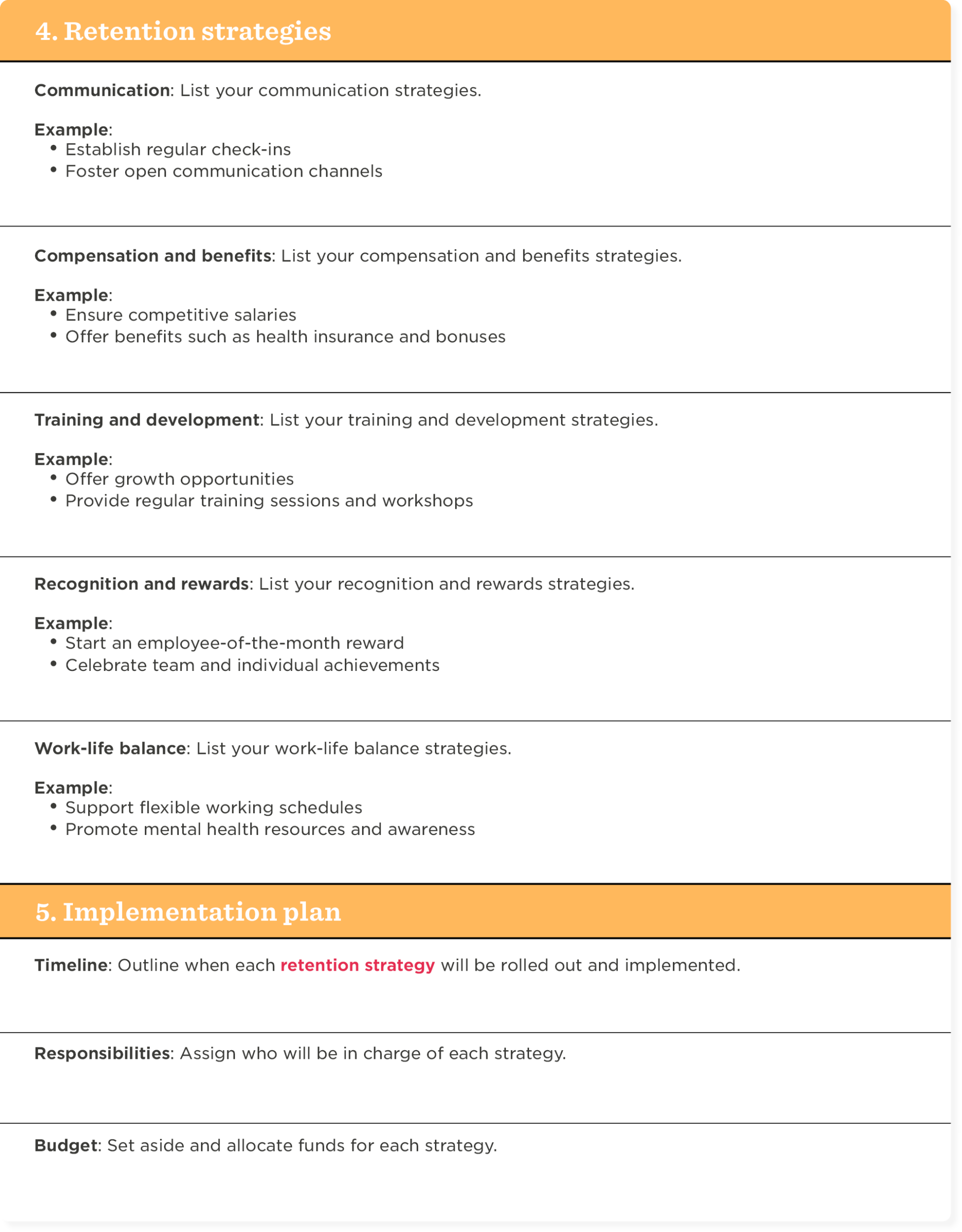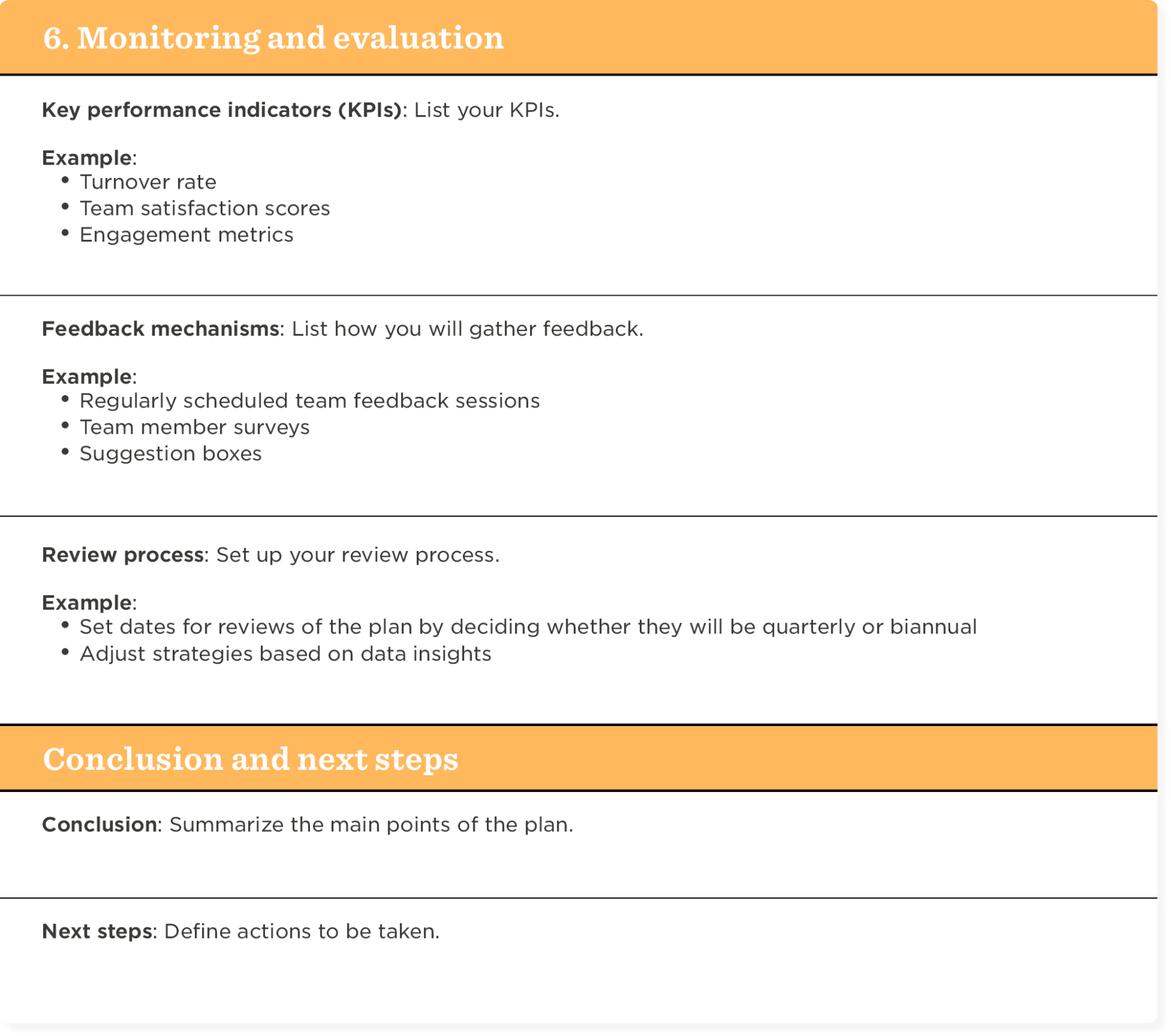Employee retention is a top concern for businesses worldwide.
And it’s not just because organizations want to preserve their intellectual capital or because they want to cut down on the immense costs associated with turnover—it’s because people are the heartbeat of every organization.
That’s why keeping them around—as well as keeping them happy, motivated, and committed—is essential.
The now infamous “Great Resignation” during the COVID era disrupted the global world of work and sparked a revolutionary push for people-centric HR and business strategies. It underscored the criticality of having a well-thought-out retention plan focused on boosting employee satisfaction and engagement. This guide aims to support you in creating a plan that not only helps you to keep hold of your brightest stars but also allows them to thrive.

What is an employee retention plan?
At its core, an employee retention plan is a strategic blueprint outlining how an organization aims to retain its team members, reduce turnover, and curate a company culture and atmosphere where people thrive long-term.
Companies typically achieve this by offering people-led benefits and schemes, such as fostering a positive and inclusive work environment, promoting employee engagement, showing appreciation, providing competitive pay and benefits, and encouraging a healthy work-life balance.
The goal? To keep your top talent engaged and motivated and foster a sense of loyalty toward your company. This, in turn, will help to cut down on your turnover and boost your employee retention rate.
Components of an employee retention plan
We’ve said it before, and we’ll say it again—an effective employee retention plan isn’t just about keeping people from leaving: It’s about creating an environment where they want to stay and grow professionally.
When you set out to create your plan, consider these critical components:
- Clear communication. Make sure you keep clear and open channels of communication with your team. Practice a policy of complete transparency to let your people know where the business stands financially, what your roadmap looks like, what benefits you’re offering and planning to offer, and where each team member fits into the big picture. Clearly communicating this information helps build trust and provides potential hires with a realistic view of job stability.
- Competitive benefits and compensation. Regularly review your packages to ensure they’re on par with—or better than—industry standards.
- Accessible training and development. Give your team members the chance and room to grow, learn new skills, and advance their careers within your organization.
- Full recognition and rewards. Celebrate your team members’ achievements, both big and small. And make sure to recognize instances of hard work, innovation, and collaborative thinking.
- Flexible working schedules. Consider utilizing flexible working schedules that allow for remote work, flexible hours, or compressed workweeks to support a healthy work-life balance.
- An inclusive and forward-thinking culture. Foster a culture of respect that embraces diversity and inclusion. Make a point of listening to people’s individual feedback and input, ensuring that every voice across your organization matters and carries equal weight.
- Effective onboarding. A strong start sets the foundation for a productive working experience. Ensure all new hires feel welcomed, well-trained, and fully integrated.
<< Download and print this template to build an effective retention plan >>
Creating your employee retention plan
Creating a strong retention plan is a dynamic, ever-evolving process. It requires a thorough understanding of your organization’s strengths and challenges and the diverse needs of your team.
Here’s a detailed approach to crafting a plan that can work for your organization:
1. Conduct an assessment
The first step is to begin with a comprehensive evaluation. This can include:
- A turnover analysis. Thoroughly assess your current turnover rates and see if you can identify any patterns. Are specific departments experiencing particularly high turnover? At what point in their tenure are your team members leaving? These questions can lead to some insight into what’s causing turnover at your organization.
- Exit interviews. Conduct structured exit interviews to gain valuable insight into why your people are leaving. Are there any common themes or concerns that arise throughout your interviews?
2. Gather feedback
Gather feedback from your team to glean further insights which can help you structure your plan effectively. You can do this with:
- Team surveys. Regularly carry out polls with your team members. For more accurate and honest answers, use anonymous surveys or other discreet feedback tools to gauge your people’s satisfaction, challenges, and what they most value in their day-to-day working lives.
- Open forums. For more open and frank discussions, forums can be a great way to gather feedback. Making these conversations a safe space for people to voice their opinions and concerns and provide suggestions or discuss how you can work together to improve things is important.
3. Set clear objectives
The next step is carefully considering your goals and aims. You will need to:
- Define your purpose. Clearly articulate the goals of your retention plan. Ask yourself questions such as whether you’re targeting a specific reduction in turnover or whether you’re also aiming to improve your overall satisfaction numbers.
- Set measurable targets. Make sure each of your objectives is quantifiable. For example, say that you want to reduce turnover by 8 percent rather than just vaguely saying you want to “reduce turnover.”
4. Align your implementation
When you roll out your plan, you’ll need to make sure everything is in place to ensure the plan goes as smoothly as possible. Make sure that you:
- Get leadership buy-in. Before you properly get started, make sure your senior leaders and managers approve of and understand your plan’s importance and their roles in ensuring its eventual success.
- Set up training sessions. Equip your leaders and managers with the right tools and resources to support your plan’s strategies. For example, offer communication workshops if one of your goals is to improve communication.
- Communicate your plan effectively. Clearly lay out your plan’s details and benefits to your entire organization. Being transparent and clear lets you foster trust among your team and get buy-in from all levels.
5. Review and refine your plan
The final step is to review and refine your plan. This ensures it’s always up-to-date, relevant, and at the best possible level to keep your team happy and engaged.
You should carry out:
- Periodic checks: Set specific intervals, such as quarterly or biannually, to review your plan’s effectiveness.
- Adjustments: Based on the feedback and data you gather, make necessary tweaks to your strategies and your overall plan.
<< Download and print this template to build an effective retention plan >>
Our employee retention plan template
To help you get started, here’s our employee retention plan example template. Remember, you can tweak this template to better fit your organization’s and your team’s needs.
<< Download and print this template to build an effective retention plan >>
Best practices for implementing your employee retention plan
Ensuring you can implement your retention plan successfully is no easy task. It requires a dedicated approach that fully aligns with your organizational goals.
Here are some best practices to ensure your roll-out and ongoing implementation are smooth and effective:
- Get leadership buy-in. Make sure your leaders are fully informed of your plan and fully support it. This way, they can be active champions of your retention efforts and set the tone for your entire organization.
- Communicate frequently. Regularly communicate the importance of your retention plan while also sharing the reasons behind its creation. Open and frequent communication can help foster a deeper understanding among all your people about what’s going on in your organization from top to bottom.
- Provide updates. Carrying on from communication, make sure that as your plan progresses, you’re regularly updating your team about its impact and any adjustments you’ve made.
- Carry out regular training. As your organization grows and evolves, your plan will evolve with it. This means you’ll need to keep your people team’s training fully up to date so they can handle new retention challenges.
- Cultivate a safe environment. Make sure your people always feels comfortable and supported when they provide feedback. This can be achieved through promoting an open discourse, or by enabling anonymous feedback.
- Celebrate successes. Establish programs that celebrate both your teams’ successes and the successes of individuals across the company.
Recommended For Further Reading
Measuring the success of your retention plan
The proof of any plan’s success lies in its measurable outcomes.
When it comes to measuring the success of your plan, it’s important to have a set list of both qualitative and quantitative KPIs to track.
Here are some key points you may want to consider when measuring employee retention:
- Turnover rates. Your employee turnover rate is the best—and most obvious— way to gauge the effectiveness of your retention strategies. A decrease will suggest your plan is working, whereas an increase—or even stagnation—would suggest there is still work to do.
- Team satisfaction surveys. Hearing directly from your team is the best possible way to gain insights into how well your plan is performing. Surveys can help to pinpoint what’s working and what’s lacking.
- Exit interviews. When a team member decides to part ways with your company, their reasons for leaving can give you invaluable insights into what went wrong. Analyzing your exit interviews can help you to refine your retention approach and adjust your plan accordingly.
- Engagement metrics. Going beyond retention, it’s also crucial to make sure your team is actively engaged. These metrics will help shine a light on the level of enthusiasm and involvement your team has.
- Feedback sessions. Similar to exit interviews, feedback sessions allow you to directly hear from your team. Creating an open dialogue about your retention plan helps foster a culture of openness and continuous improvement.
Boost your retention and secure your organization’s future
As your business pivots and grows, there’s always one thing that will remain the same: that your people are your most valuable asset. But the key to sustainable success isn’t just finding and securing the best talent out there—it’s keeping people happy, nurturing them, and ultimately retaining them.
With this guide and our employee retention action plan template, you can foster a vibrant and engaging environment and company culture that can boost morale, attract talent, and keep hold of your best team members.
So remember: Listen to your people, celebrate their successes, and give them confidence in job stability and financial security.



